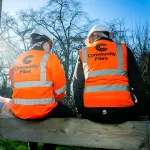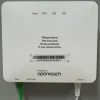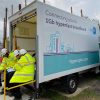April 2025 Progress Update on BT’s 10Mbps UK Broadband USO

UK ISP BT has published their first biannual progress update for 2025 on their delivery of Ofcom’s somewhat maligned 10Mbps Universal Service Obligation (USO) for broadband. The provider has so far helped to build a USO connection to over 8,411 premises (up from 8,248 in Oct 2024), with 349 further builds in-progress (up from 215).
The USO is a legally-binding and industry-funded obligation that falls on BT across the UK and KCOM in just Hull. In short, people living in areas where they can’t yet receive a 10Mbps or faster download speed, and aren’t expected to be covered by such a network in the next 12-months, can request a service capable of 10Mbps+ downloads (1Mbps upload) from the aforementioned internet providers.
A cost sharing model also applies here, which means that the providers will “calculate the total excess cost of the build and divide that between the eligible premises. If that amount is below £5,000 per premises (on top of the £3,400), we’ll automatically split the costs“. But some areas can still end up costing hundreds of thousands of pounds, even up to £1-2m, and would thus find the USO route to be unviable (here and here).
Advertisement
Ofcom states that 58,000 UK premises (0.2%) currently fall into the USO gap (i.e. those outside of suitable fixed line, fixed wireless or 4G mobile coverage) or 385,000 premises if you exclude wireless solutions. But the regulator predicts the current 58k figure could fall to 48k by the end of 2025, mostly as a result of upgrades delivered via publicly funded schemes (connection vouchers, project gigabit contracts etc.).
Just to be clear about this. Many of those who pursue the USO option via BT say they were offered 4G (mobile broadband) connections via EE instead, but those actually considered to have been delivered under the USO itself usually get Fibre-to-the-Premises (FTTP). Commercial builds of the latter have also helped to shrink the USO gap.
The gap will continue to shrink as both commercial and subsidised builds (e.g. the Gov’s £5bn Project Gigabit programme) expand. The government are also still exploring how best to reach those who live in “Very Hard to Reach” areas even faster speeds – roughly equating to the same sort of area as the USO is focused upon – and at the same time they’re due to review the USO itself (here), which could lead to changes. But this work seems to have been delayed a bit by the recent change in government.
BT’s April 2025 Broadband USO Report
The latest statistics continue to show that the delivery of USO is a slow process (e.g. in April 2023 there were 800 builds in progress, then 185 in Oct 2023, 265 in April 2024, 215 in Oct 2024 and now an uptick to 349). We suspect this may be a combination of factors, such as a lack of consumer familiarity with the USO (apply for it here), new services like Starlink becoming available, the shrinking area of USO eligibility and the fact that the policy may be running into the limitations of economically viable deliverability.
Advertisement

Mark is a professional technology writer, IT consultant and computer engineer from Dorset (England), he also founded ISPreview in 1999 and enjoys analysing the latest telecoms and broadband developments. Find me on X (Twitter), Mastodon, Facebook, BlueSky, Threads.net and Linkedin.
« Success as Amazon Lofts First 27 Project Kuiper Broadband Satellites























































Am I the only one staggered we still have anyone asking for a pathetic 10 meg minimum that hadn’t already acted in the many many years previous?
…and when on earth will we realise that 10 meg is a pretty pathetic USO.
Not really. Considering the best many can still get is FTTC and many cabinets are at capacity, then anyone moving into the same area may well find the best they can get is slow speed ADSLx
What do you think the USO should be, and how much do you think USO recipients should pay for it?
10Mbit is enough to do the essentials and it gives more flexibility for the delivery system, as even ADSL can do that if the line is short enough.
It’s always been a bare minimum solution. Even in the days of dialup internet where the USO only required BT to provide a line capable of voice calls and low speed data. Hence the dreaded DACS and its victims getting 28.8k or less.